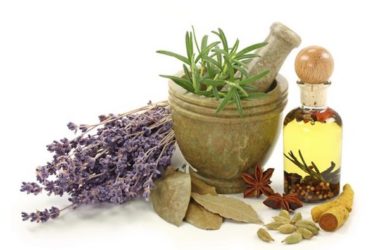Nutrition is particularly important in the arthritis autoimmune disease. What has to be considered? This article answers this question.
An estimated 1.3 million people in Germany suffer from rheumatoid arthritis. The disease usually starts between the ages of 40 and 60, two thirds of the patients are women. In almost 80 percent of the patients a positive rheumatoid factor was detected in the blood, i.e. the detected antibodies indicate a more severe course of the disease than in patients with a negative rheumatoid factor. Symptoms are joint pain with swelling of the finger joints, wrists, elbows, metatarsophalangeal joints and knees.
Arthritis – an autoimmune disease
Arthritis is an autoimmune disease in which the body turns against itself. Actually, our immune system should fight foreign invaders, such as bacteria or viruses. In an autoimmune disease, however, it is directed against the body’s own healthy cells and thus attacks the synovial membrane. As a result, inflammation, swelling and growths occur. The causes of this misorientation have not been clearly clarified. It is suspected that infections are involved. Psychological influences are also suspected.
Arthritis and nutrition
Although the causes of rheumatoid arthritis have not been clearly clarified, it is clear that certain messenger substances, the eicosanoids, are responsible for the development of inflammation in the joints. The formation of eicosanoids is strongly related to nutrition. These eicosanoids are formed from arachidonic acid, which is mainly found in animal fat. If this arachidonic acid level is high, more eicosanoids are formed, which in turn cause joint inflammation. Vegetable foods and omega3 fatty acids reduce the formation of eicosanoids.
arthritis and the psyche
In psychosomatics arthritic people are considered “Samaritans”, i.e. they are overly caring, helpful, think more of others than of themselves. They usually have problems dealing with aggression. When they are angry with others, they tend to direct their aggressions against themselves (like their immune system). They are shy, self-sacrificing, compassionate, sometimes even submissive. This corresponds to the cliché of the typically female character.
Not for nothing two thirds of the sick women are.
Arthritis vs. osteoarthritis
Osteoarthritis mainly affects the knee and hip joints. In the early stages, a “crunch” is usually noticeable. Feelings of tension are often added. At a later stage, swelling occurs. The pain can increase to intolerability. Running, climbing stairs and lifting heavy loads become a problem. In the later stages, deformations occur in the joints. In order to avoid pain, the patient usually takes a relieving posture. This leads to incorrect postures, which often leads to severe back tension. From the age of 35, every second person has radiological signs of arthrosis. From the age of 65, 95% of people show these signs. However, not everyone is bound to complain.
Much exercise helps with arthrosis
There is a space between the two bones in each joint. This gap is filled with the so-called synovial fluid. This substance contains many important nutrients for the cartilage. If you move regularly, enough synovial fluid is formed. If you sit mainly on the couch, the cartilage is not sufficiently supplied. The bones rub against each other and become inflamed. Pain is the result. If you already have joint problems, you should only do sports that are easy on the joints, such as swimming, cycling or Nordic walking. Targeted strength training is also good because it strengthens the surrounding muscle tissue, which reduces pain.
Nutrition to fight rheumatoid arthritis
Make sure you eat cold water fish such as herring, mackerel, trout, salmon and tuna. Although there is no magic elixir, omega-3 fatty acids in fish oil are the most promising anti-inflammatory substances in food, says Ruth Frechman, a registered nutritionist and spokeswoman for the American Dietetic Association.
Studies have shown that fish oil can relieve tender joints and relieve morning stiffness. It has also allowed some people to reduce the amount of conventional medications they take for RA. fish provides about one gram of omega-3 fatty acids per 100 grams of fish. If you decide to try fish oil supplements, talk to your doctor about a dosage. People with RA can often take a higher level of fish oil than is recommended for the general public, but side effects can occur. Higher doses of fish oil may interact with certain medications, including those for high blood pressure.
Increase your intake of fiber from fruits, vegetables and whole grains can also help reduce inflammation.
Studies show that the addition of dietary fibre leads to a lower amount of C-reactive protein (CRP) in the blood; CRP is an indicator of inflammation.
Extra virgin olive oil can also help reduce inflammation, as can a non-steroidal anti-inflammatory drug (NSAID) such as ibuprofen or aspirin – it contains a compound called oleocanthal which blocks the enzymes that cause inflammation.
But maybe you don’t want to empty your medicine cabinet yet. It would take 3½ tablespoons of olive oil – worth 400 calories – to meet the anti-inflammatory properties of a 200 mg ibuprofen tablet. Use the oil instead as an alternative to other cooking oils and butter.
supplements and inflammations
Studies have shown that people with RA have a low selenium content, a mineral found in whole wheat products and shellfish such as oysters and crustaceans. It contains antioxidants believed to help control inflammation. It may also increase the risk of getting diabetes, so talk to your doctor before taking selenium supplements.
Vitamin D, normally associated with calcium and protection against osteoporosis, can also help reduce the risk of RA in older women by regulating the immune system. Good sources of vitamin D are eggs, fortified bread, cereals and low-fat milk.





